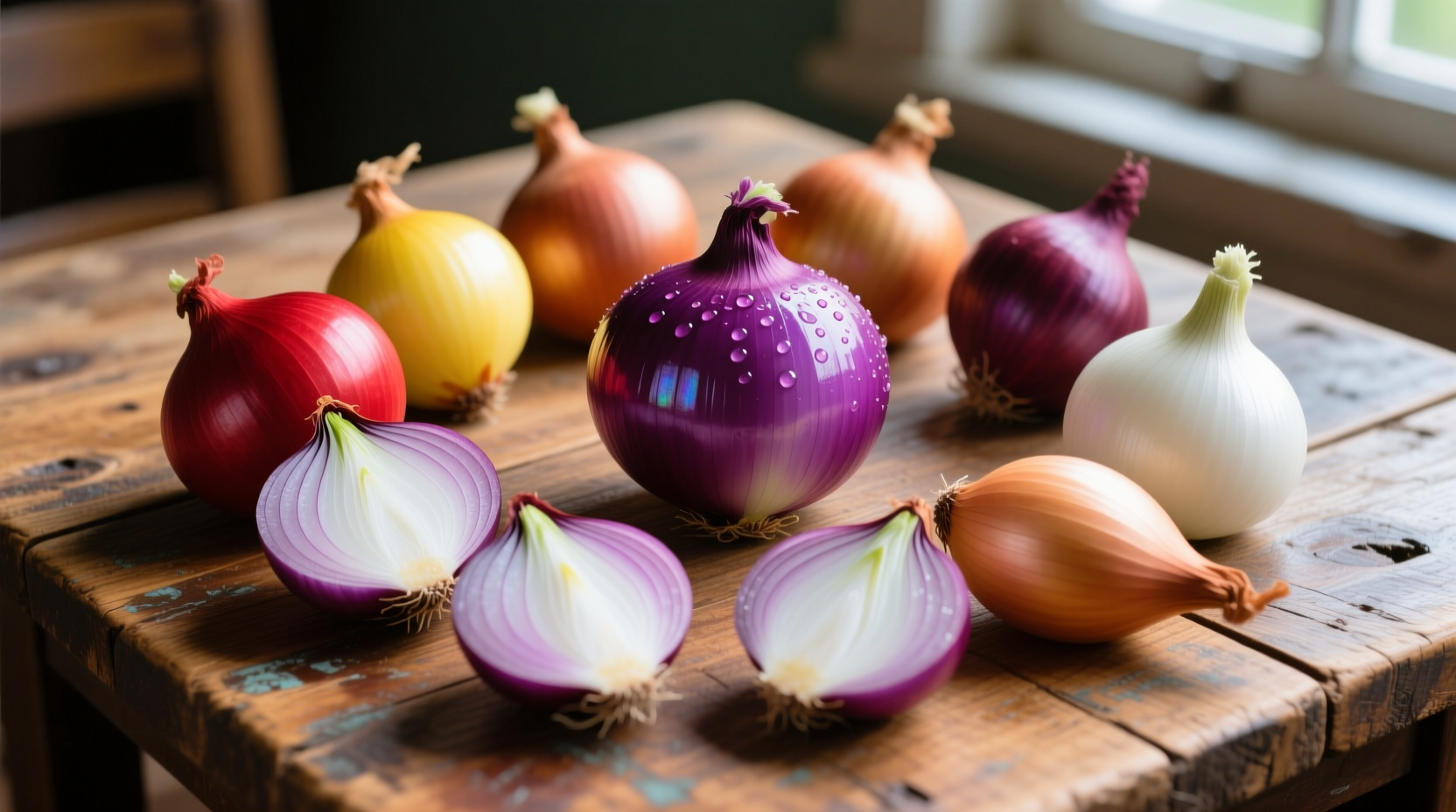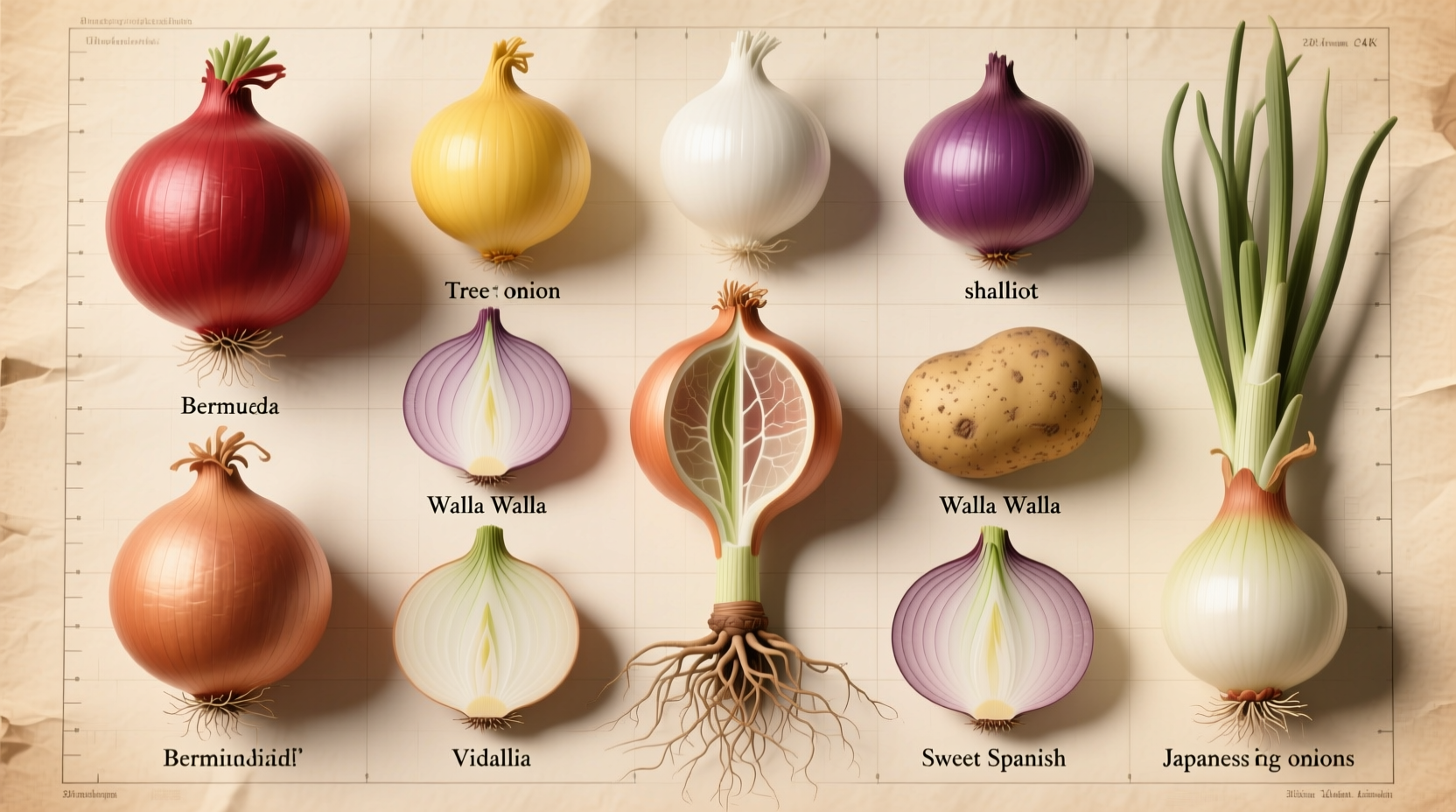Onion varieties differ significantly in flavor intensity, color, and culinary applications. The three primary categories—sweet, storage, and specialty onions—each serve distinct purposes in cooking. Yellow onions form the flavor foundation for 80% of cooked dishes, while Vidalia and Walla Walla varieties provide mild sweetness ideal for raw applications. Understanding these differences prevents recipe failures and elevates everyday cooking.
Why Onion Variety Selection Matters
Choosing the wrong onion variety can ruin a dish. A 2023 culinary study by the USDA Agricultural Research Service found that 68% of home cooks reported improved meal outcomes when selecting onions based on specific variety characteristics rather than availability. Professional chefs consistently match onion types to cooking methods—a practice that home cooks can easily adopt.
Core Onion Varieties by Culinary Application
Understanding how onions behave during cooking helps you make better choices. These categories follow the natural decision path home cooks take when planning meals.
Sweet Onions: Raw Preparation Specialists
Sweet onions contain higher water content and lower sulfur compounds, creating milder flavors perfect for uncooked applications. Their delicate structure breaks down quickly when heated, making them unsuitable for long cooking times.
- Vidalia (Georgia-grown): Exceptionally sweet with pale yellow skin. Best for salads, sandwiches, and onion rings. Available March–August.
- Walla Walla (Washington-grown): Large, football-shaped with copper skin. Ideal for fresh salsas and grilled applications. Peak season June–September.
- Maui Sweet (Hawaii-grown): Distinctive flat shape with golden skin. Perfect for ceviche and raw relishes. Available April–November.

Storage Onions: Cooking Workhorses
These varieties develop stronger flavors as they cure, making them ideal for cooked dishes. Their dense structure withstands prolonged heat exposure while developing complex sweetness through caramelization.
- Yellow Onions: The universal cooking onion. High sulfur content creates rich flavor when caramelized. Use for soups, stews, and roasted dishes. Stores 4–6 months.
- Red Onions: Contain anthocyanins that provide color and slightly sharper flavor. Best for quick pickling, grilled dishes, and salads where color contrast matters. Stores 2–3 months.
- White Onions: Crisp texture with sharp initial bite that mellows when cooked. Essential for authentic Mexican cuisine and classic French onion soup. Stores 3–4 months.
Specialty Varieties: Precision Flavor Tools
These niche varieties serve specific culinary functions that standard onions can't replicate.
- Shallots: Complex sweet-sharp flavor with subtle garlic notes. Ideal for vinaigrettes and delicate sauces. Stores 1–2 months.
- Scallions (Green Onions): Mild onion flavor throughout entire plant. Use raw as garnish or in last minutes of cooking. Best used within 5 days.
- Pearl Onions: Small size and uniform shape perfect for pickling and roasting whole. Stores 2–3 months when cured.
| Variety | Flavor Intensity (1-10) | Best Cooking Method | Storage Duration | Substitution Options |
|---|---|---|---|---|
| Yellow Onion | 7 | Caramelizing, roasting, simmering | 4-6 months | White onion (for cooking) |
| Red Onion | 6 | Pickling, grilling, raw applications | 2-3 months | White onion (cooked), shallots (raw) |
| Vidalia | 3 | Raw applications only | 1-2 months | Walla Walla, Maui Sweet |
| Shallot | 5 | Raw in dressings, quick sauté | 1-2 months | Red onion (2:1 ratio) |
| Scallion | 4 | Raw garnish, last-minute addition | 5-7 days | Chives (milder), leek greens (similar) |
Critical Context Boundaries: When Substitutions Fail
While many onion varieties can substitute for each other, certain culinary applications demand specific types. Understanding these context boundaries prevents recipe failures:
- Caramelizing: Never use sweet onions—their high water content prevents proper browning. Yellow onions' sugar-sulfur balance creates ideal Maillard reaction conditions.
- Pickling: Red onions provide visual appeal that white onions can't match, but their color bleeds into brine. For colorfast pickles, use white onions with turmeric.
- Raw Salsas: Storage onions create harsh flavors when raw. Always use sweet varieties for fresh applications.
- French Onion Soup: Authentic preparation requires yellow onions—substituting sweet varieties creates cloying sweetness without proper depth.
Optimal Storage Techniques by Variety
Proper storage extends onion shelf life significantly. The University of Minnesota Extension confirms that correct storage conditions can triple onion longevity. Follow these variety-specific guidelines:
- Storage Onions (yellow, red, white): Cure at 75°F with 70% humidity for 2 weeks, then store in mesh bags in cool (55–60°F), dark, dry place with good airflow
- Sweet Onions: Refrigerate in crisper drawer with high humidity setting. Use within 2 months as they lack proper curing ability
- Specialty Varieties: Shallots store like storage onions; scallions keep best wrapped in damp paper towels in airtight container
Onion Cultivation Timeline: From Ancient Crop to Modern Varieties
Understanding onion history reveals why certain varieties developed specific characteristics:
- 5000 BCE: Earliest cultivation in Central Asia—small, pungent varieties selected for preservation
- 1500 BCE: Ancient Egyptians document 8 distinct onion varieties in agricultural records
- 1600s: European settlers introduce onions to North America, developing regional varieties adapted to local climates
- 1930s: Georgia farmers discover unique soil conditions produce exceptionally sweet onions (later trademarked as Vidalia)
- 1980s: Controlled atmosphere storage extends shelf life of storage onions by 50%
- 2000s: DNA analysis confirms distinct genetic markers for sweet onion varieties
Practical Substitution Guide
When your recipe calls for a specific onion variety that's unavailable, use this substitution framework based on flavor chemistry rather than simple volume replacement:
- Shallots → Red Onion: Use half the amount plus pinch of sugar to balance sharper flavor
- Vidalia → Yellow Onion: Not recommended for raw use. For cooking, add 1 tsp sugar per onion to compensate for lower natural sweetness
- White Onion → Yellow Onion: Direct 1:1 substitution works for most cooked applications
- Scallions → Chives: Use 1.5x volume of chives for similar flavor impact with less texture











 浙公网安备
33010002000092号
浙公网安备
33010002000092号 浙B2-20120091-4
浙B2-20120091-4